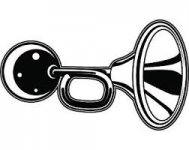longbridgehealey
Obi Wan
Offline
Why use a relay for horn? I have installed a Charlie Hart seven fuse unit, with one fuse dedicated to the horns. Is there any reason to install a relay unit in the horn wiring? My new horns came with one, but I’m not sure I need it.
Once again, many thanks!
Larry (again)
Once again, many thanks!
Larry (again)

 Hi Guest!
Hi Guest!

 smilie in place of the real @
smilie in place of the real @
 Pretty Please - add it to our Events forum(s) and add to the calendar! >>
Pretty Please - add it to our Events forum(s) and add to the calendar! >> 


